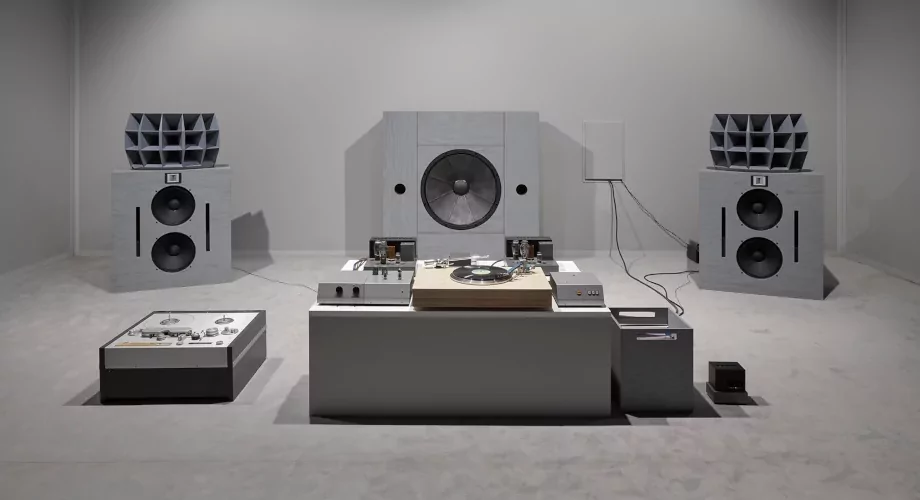Over the next few months we’re going to be looking at the last sixty years of recorded music from a slightly different perspective. A decade at a time, writer and music historian Chris May will be working with the VF editorial team to uncover what we’re calling the “most collectable” records of each era. Unlike traditional “collectables” lists defined by monetary value, these are records picked for their importance as artefacts, whether rare, revolutionary or representative of a moment in time. We begin with the 1950s when the LP was in its infancy and the modern world as we know it was starting to take shape.
The 1950s are generally perceived as a monochrome and conservative decade, in contrast to the technicolour and revolutionary 1960s. The recorded music of the 1950s, however, reveals a different picture. Innovation and experiment were to the fore in pop, jazz, R&B, electronic, conservatoire and even, though it sounds counterintuitive, in traditional folk music. Teenagers were invented, and so were free jazz and rock ‘n’ roll.
In the 1950s, too, increasing numbers of record buyers in the US and Europe were listening to music from distant cultures, a process encouraged by recovery from post-World War II economic austerity, affordable international air travel (for the middle classes anyway) and the increasing prevalence of LPs. By the end of the decade, recordings of African, Indian, Latin American and South Asian musics, sometimes mediated by jazz and exotica, sometimes presented in their authentic states, were commonplace.
Looked at chronologically, as in this list of the some of the most enduring and collectable releases of the decade, the 1950s were soundtracked by a giddying, multi-coloured galaxy of music. Some of the discs are by artists widely-celebrated today, although where possible an effort has been made to avoid the most obvious choice of releases, others are by musicians who were little known at the time, and remain so today. Hopefully, you will find a few surprises along the way.
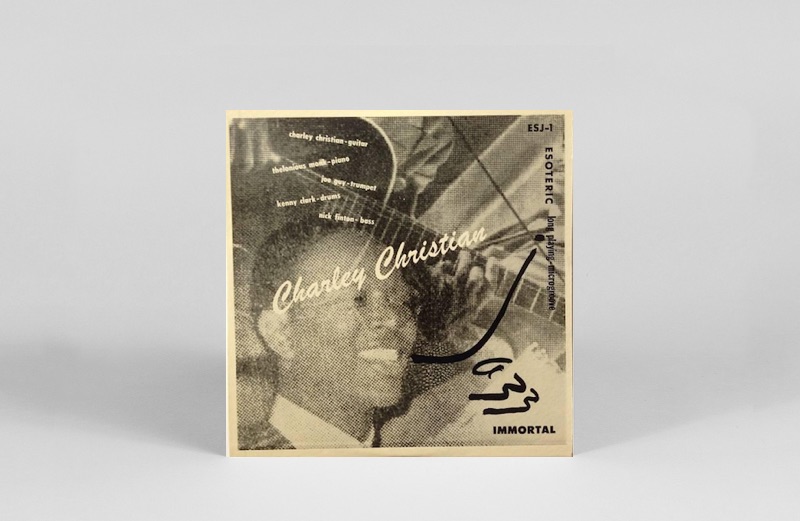
Charlie Christian
Jazz Immortal
(Esoteric 10” LP, 1951)
Recorded live at Harlem afterhours club Minton’s in 1941, but not released until 1951, nine years after guitarist Charlie Christian’s passing, Jazz Immortal is a bop urtext. Christian pioneered both the frontline role of the electric guitar – on which he played his solos single-note style, like a saxophone or trumpet – and the more complex harmonies which defined the style. The album catches Christian away from the highly-structured surroundings of his rent-paying gigs, the Benny Goodman sextet and orchestra, jamming with fellow revolutionaries Thelonious Monk and Dizzy Gillespie. The LP consists of two, hard-driving, nine-minute workouts. In 1957, Esoteric rereleased the tracks along with others recorded at a second Harlem club, Monroe’s, on a 12” album, After Hours, which is also worth seeking out.
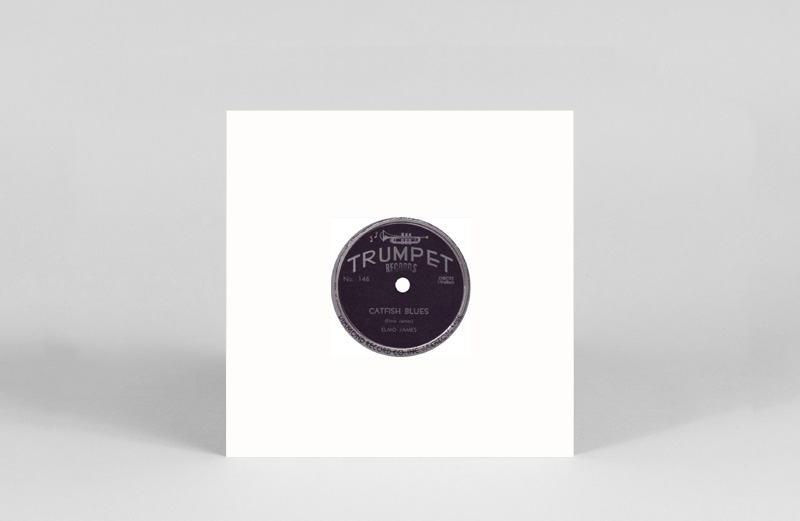
Elmore James
Dust My Broom / Cat Fish Blues
(Trumpet 78rpm single, 1951)
The riff that launched a thousand blues-rock bands in the 1960s. Electric slide-guitarist Elmore James’ ‘Dust My Broom,’ though credited to James, was a remake of Robert Johnson’s ‘I Believe I’m Gonna Dust My Broom’ from 1937. James and Johnson both lived in Mississippi in the late 1930s and it is possible that James was taught the song by Johnson himself. James’ heavily amplified, intense interpretation gave the song a refit for the new, urban, electric-blues age emerging in Chicago among players such as Muddy Waters. Most of his later releases tweaked the riff without ever quite achieving the impact of ‘Dust My Broom’ and this, James’ first single, remains his best.
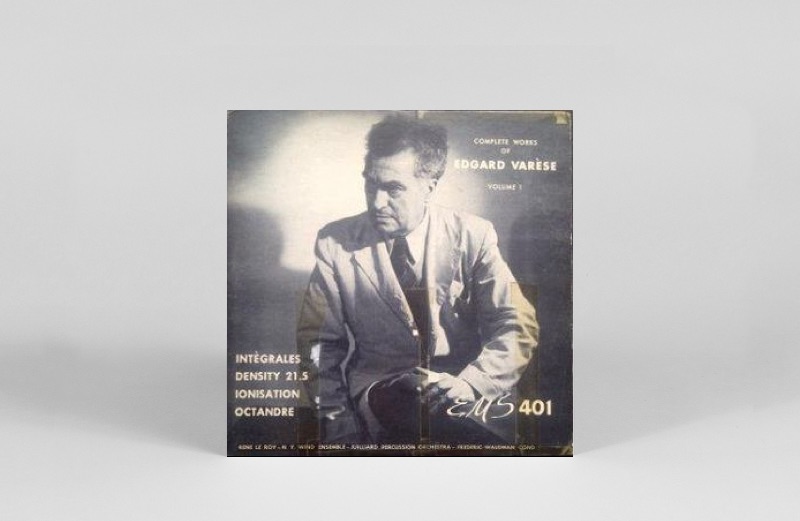
Edgard Varèse
Complete Works Of Edgard Varèse, Volume 1
(EMS LP, 1951)
Working in New York in the 1920s, the French-born composer Edgard Varèse pioneered electronic and percussion music. His legacy inspired a generation of younger experimentalists including John Cage – and, later, Frank Zappa. In 1955, aged 14, Zappa discovered Complete Works Of Edgard Varèse, Volume 1 gathering dust in a Los Angeles record store. The owner let Zappa have it cheap because in four years he had been unable to sell a copy. Zappa wrote that the album, and in particular the percussion-only track ‘Ionisation,’ changed his entire conception of music. Premiered in 1933, when Henry Cowell was a member of the 13-strong ensemble, the five-minute piece’s impact was described by one contemporary critic as like a “sock in the jaw” (in a good way).
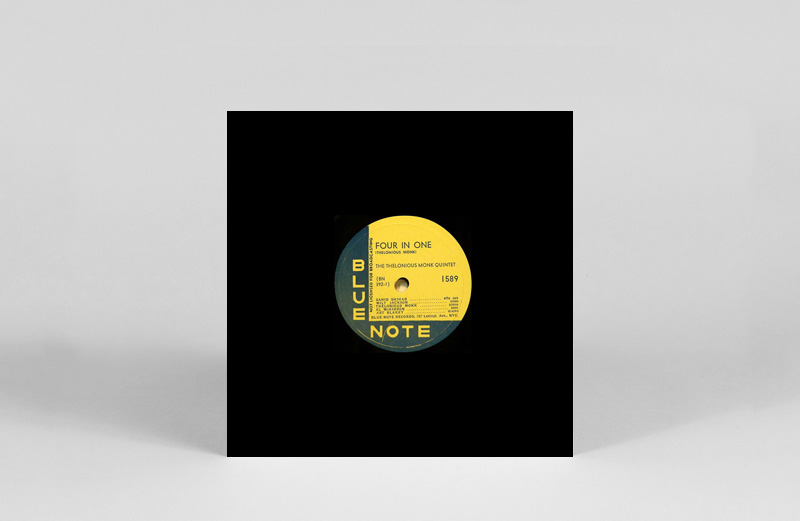
The Thelonious Monk Quintet
Straight, No Chaser / Four In One
(Blue Note 78rpm single, 1952)
Thelonious Monk’s first recordings for Blue Note – his most auspicious label, for which he recorded from 1948 to 1952 – were issued as 78rpm singles, some of which were later rereleased as 45rpm singles before being collected on two 10” LPs, Genius Of Modern Music Volume One and Volume Two. Other collectable 78s include ‘’Round About Midnight’ / ‘Well, You Needn’t’ and ‘Epistrophy’ / ‘In Walked Bud.’ This debut recording of ‘Straight, No Chaser,’ Monk’s signature tune for the next three decades, was made with a quintet including Milt Jackson and Art Blakey.
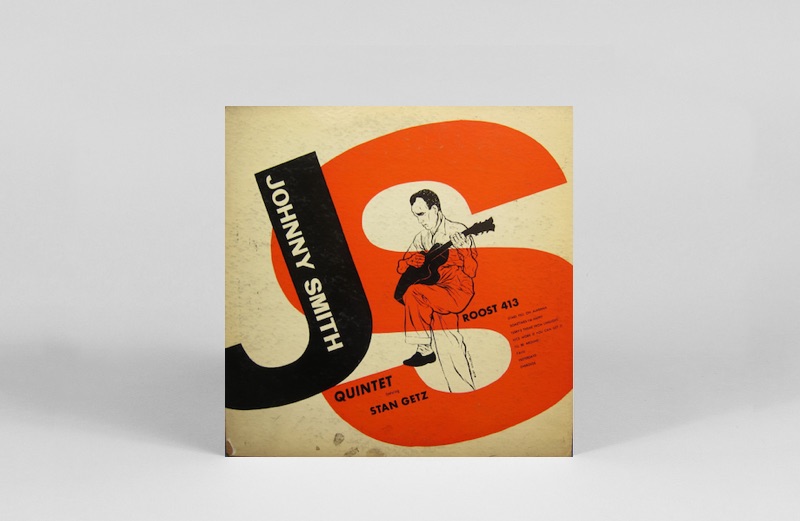
Johnny Smith
Jazz At NBC Series
(Royal Roost 10” LP, 1952)
Widely overlooked today, New York session-guitarist Johnny Smith’s Royal Roost debut is a minor masterpiece from a near-forgotten genius. Smith’s prodigious technique, which allowed him to play entire, melodically elevated solos using augmented chords rather than single note runs, has never been topped, although Wes Montgomery came close a decade later. Somewhat unexpectedly, given his own lush and laidback style, Smith was the composer of ‘Walk Don’t Run,’ a massive, twanging, primeval rock ‘n’ roll hit for the Ventures in 1960. The royalties from that and other cover versions allowed Smith to retire to bucolic Colorado, where he opened a guitar store and became a music teacher. Jazz At NBC includes ineffable readings of standards such as ‘Moonlight In Vermont,’ ‘Stars Fell On Alabama,’ ‘(I Don’t Stand) A Ghost Of A Chance’ and ‘Tabu.’ Jazz guitar does not get more gorgeous than this.
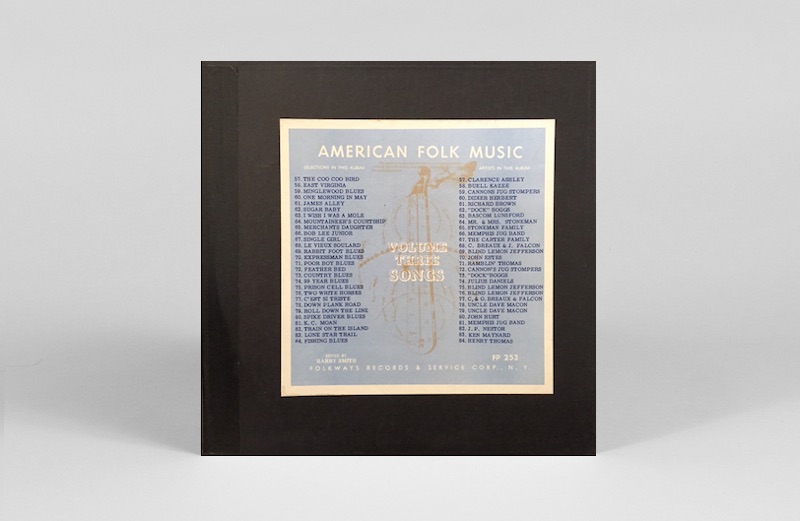
Various
Anthology Of American Folk Music
(Folkways 6xLPs, 1952)
A box-set collection of tracks first released between 1927 and 1932, the monumental Anthology Of American Folk Music was compiled by the Hollywood film-maker Harry Smith, who during the 1940s had put together a library of thousands of folk, blues and country discs. In the 1950s and early 1960s, the anthology was a primary resource for a new generation of folk musicians, and Bob Dylan and Joan Baez were among those who acknowledged its importance. Charlie Patton, the Carter Family, Blind Lemon Jefferson, Sleepy John Estes and Furry Lewis are among the better-known artists included, along with a host of more obscure but enticing names such as the Carolina Tar Heels, Prince Albert Hunter’s Texas Ramblers and the Alabama Sacred Harp Singers.
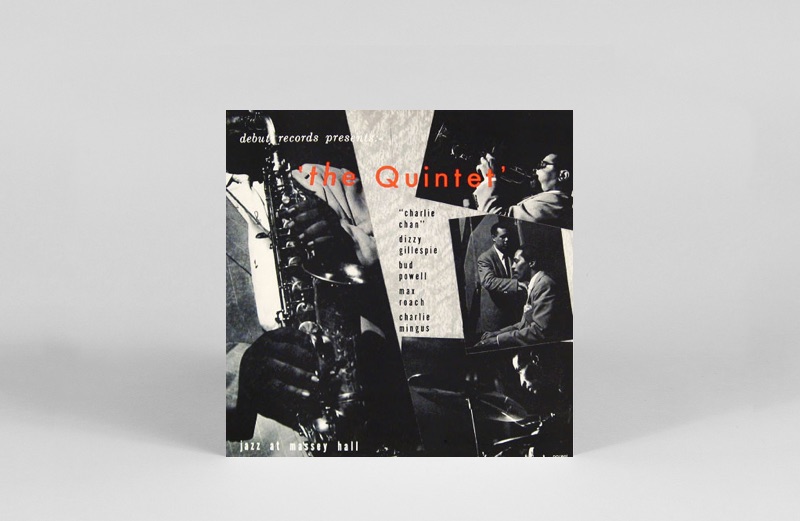
The Quintet
Jazz At Massey Hall Volume Three
(Debut 10” LP, 1953)
Recorded at a performance in Toronto, and released over three separate LPs on Charles Mingus’ shortlived Debut label, the intense and frenetic Jazz At Massey Hall features Mingus alongside bop founding-fathers Charlie Parker, Dizzy Gillespie, Bud Powell and Max Roach – with Parker billed as “Charlie Chan” for contractual reasons. Volume Three consists of three barnstorming tracks including ‘Night In Tunisia,’ on which Parker opens his solo with a virtuosic cadenza which has become known as The Famous Alto Break and which, first heard, may peel the socks clean off your feet. The best live album Parker ever recorded.
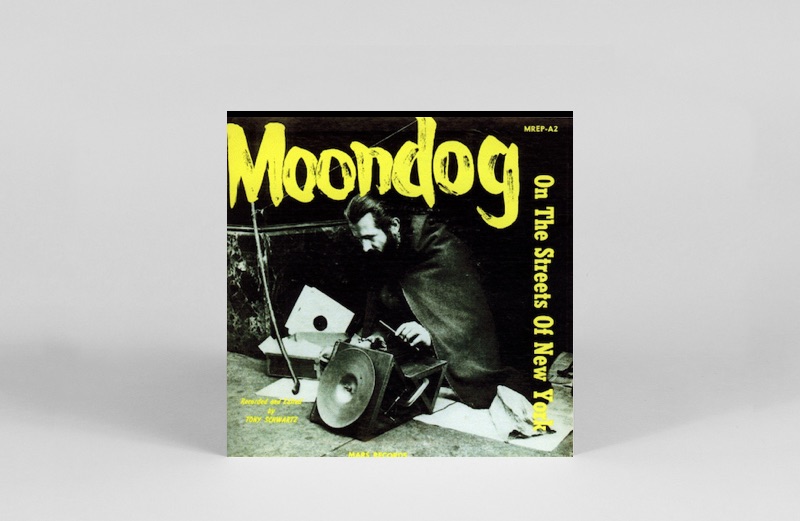
Moondog
On The Streets Of New York
(Mars EP, 1953)
In the early 1950s, Moondog’s favourite busking pitch was just off New York’s 52nd Street, then the epicentre of the jazz world. Charlie Parker was an admirer and other musicians who championed Moondog included the bandleader Woody Herman, for whose Mars label Moondog made this eight-track EP. It was recorded by Tony Schwartz, an urban folklorist who worked the streets with a portable tape recorder. Ambient sounds such as ambulance sirens and foghorns from ships on the East River pepper the tracks. The cover shows some of the instruments Moondog invented. Outsider music of the first rank.
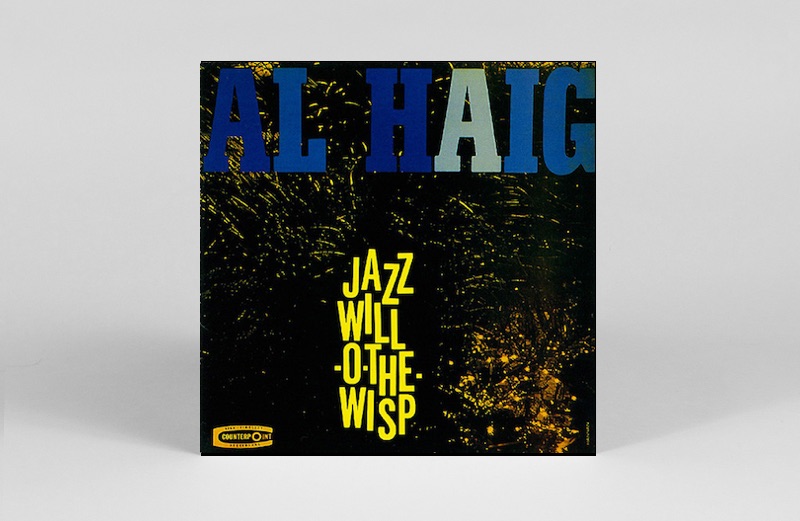
Al Haig Trio
Jazz Will-O-The-Wisp
(Esoteric LP, 1954)
Despite a confrontational personality made worse by alcoholism, Al Haig – a veteran of Charlie Parker’s groups and one of the handful of white musicians who helped shape bop in the mid 1940s – went on to record some of the loveliest, most crystalline piano albums of the 1950s. Musically, he was by this time on much the same page as Ahmad Jamal, and both musicians were dismissed by the jazz establishment as lightweights. But while Jamal was boosted by an enthusiastic Miles Davis, Haig was left on the margins, reduced to playing cocktail lounges. Jazz Will-O-The-Wisp is the best of Haig’s early albums and includes sumptuous readings of ‘Autumn In New York’ and seven other ballads including a ‘Moonlight In Vermont’ as exquisite as Johnny Smith’s 1952 version.
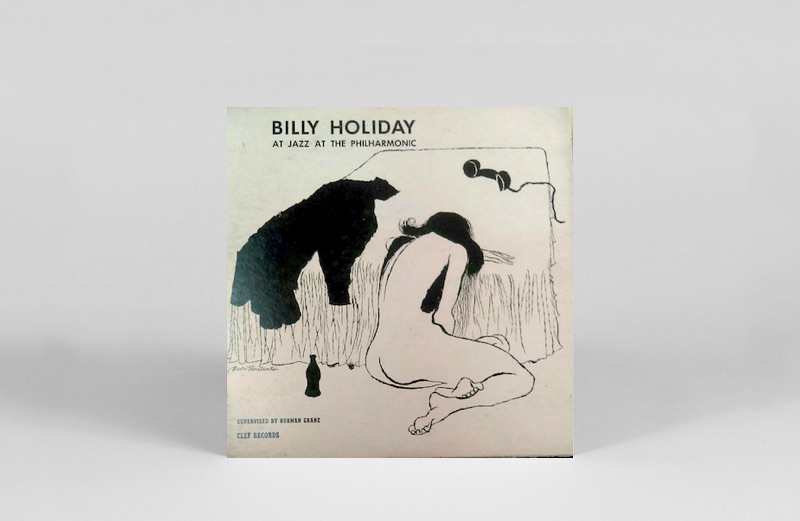
Billie Holiday
At Jazz At The Philharmonic
(Clef 10” LP, 1954)
Recorded at JATP performances produced by Norman Granz in Los Angeles and New York in 1945 and 1946, when Billie Holiday was still in her prime, and released on Granz’s Clef label (a predecessor of Verve) during her declining years, At Jazz At The Philharmonic is collectable not only for the quality of Holiday’s singing, but also for the playing of the musicians on stage with her. These include Lester Young, from 1934 until both his and Holiday’s heroin and alcohol-fuelled deaths in 1959, her most empathetic instrumental foil. The duo are heard together on side one, which includes unforgettable versions of ‘Body And Soul’ and ‘Strange Fruit,’ with Illinois Jacquet replacing Young on side two.
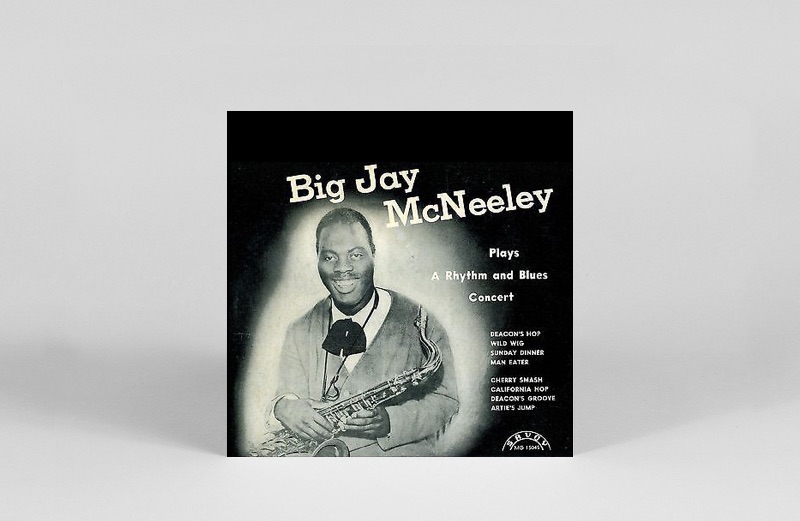
Big Jay McNeeley
Plays A Rhythm & Blues Concert
(Savoy 10” LP, 1955)
There’s an evocative description of a 1951 gig by honking ‘n’ screaming tenor saxophonist Big Jay McNeeley in photographer Bob Willoughby’s book Jazz Body And Soul. “As I walked in, the concert had already begun, and the hall was rocking on its foundations. I could see the audience on their feet screaming… Big Jay appeared away on some kind of space flight, perspiring until his clothes were soaked… He knelt, he laid flat on his back, playing into the faces of orgasmic girls… And the near-hysterical crowd just kept screaming, ‘Go! Go! Go!’… To this day I have never seen or heard anything to match it.” Plays A Rhythm & Blues Concert gives a taste.
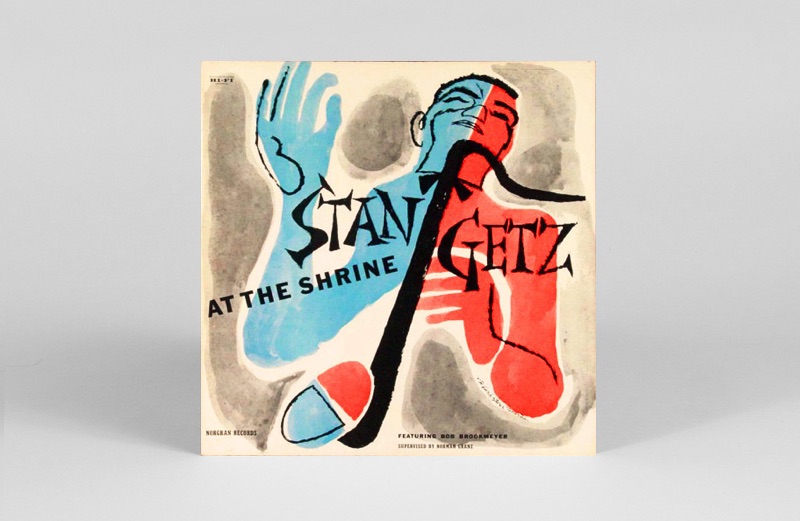
Stan Getz
At The Shrine
(Norgran 2xLPs, 1955)
Although he was always a more emotional player than popular history remembers him, Stan Getz was in 1955 the antithesis of Big Jay McNeeley – poised and ultra-melodic. This double-album captures Getz live in concert at Los Angeles’ Shrine Auditorium in 1954, sharing the frontline with valve trombonist Bob Brookmeyer. The contrapuntal interplay between the two is on a par with that on the contemporaneous West Coast recordings of Gerry Mulligan and Chet Baker. Norgran was another of the pre-Verve labels founded by Norman Granz. The album artwork is by David Stone Martin, collectable in his own right.
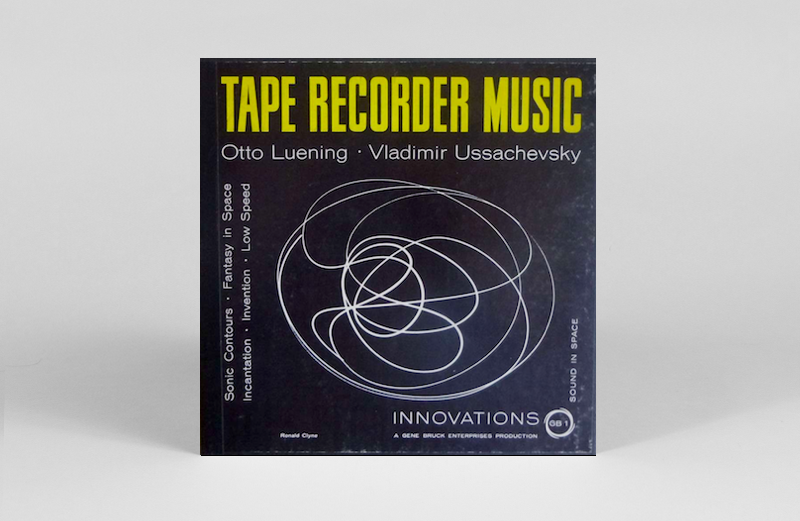
Otto Luening & Vladimir Ussachevsky
Tape Recorder Music
(Gene Bruck Enterprises LP, 1955)
Based in New York, Vladimir Ussachevsky and Otto Luening were early adopters of the reel-to-reel tape recorder as a sound source. Tape Recorder Music is a recording of a concert given at the Museum of Modern Art in 1952, believed to be the first performance of purely electronic music to be presented in the US. In contrast to most musique concrète works of the period, some of the material here has the added attraction of melody. Ussachevsky and Luening would go on to found the Columbia-Princeton Electronic Music Center, the oldest centre for electro-acoustic music in the US. Along with Edgard Varèse, John Cage, Karlheinz Stockhausen and a handful of others, the pair continued to push the boundaries, both musical and social, of electronics in music.
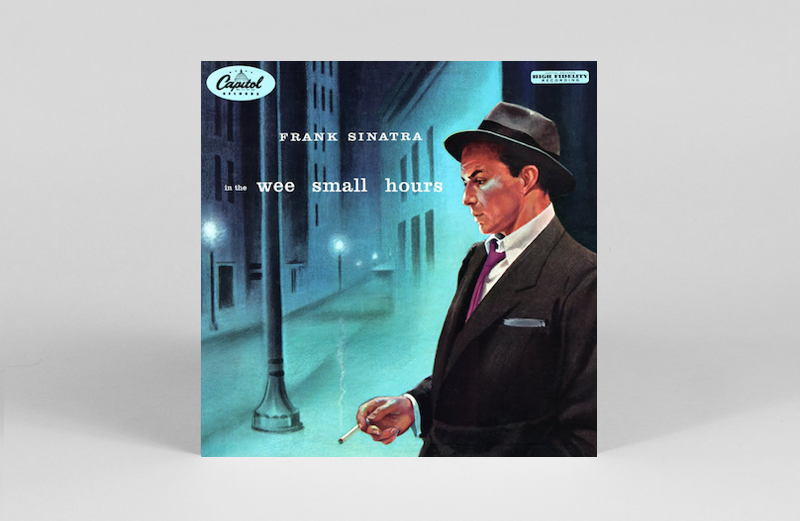
Frank Sinatra
In The Wee Small Hours
(Capitol LP, 1955)
Pop music’s first concept album? The years 1953 – 1962 were Frank Sinatra’s belle epoque, when he recorded a string of consummately voiced albums for Capitol orchestrated by Nelson Riddle. In The Wee Small Hours is a noir-ish collection of standards dealing with loneliness and broken relationships and was released in 1955 on two 10” LPs and also as a 12”. Despite its introspective ambiance, it reached number two in the US charts. In 1956, Sinatra and Riddle had similar success with a second themed-album, the upbeat Songs For Swingin’ Lovers!
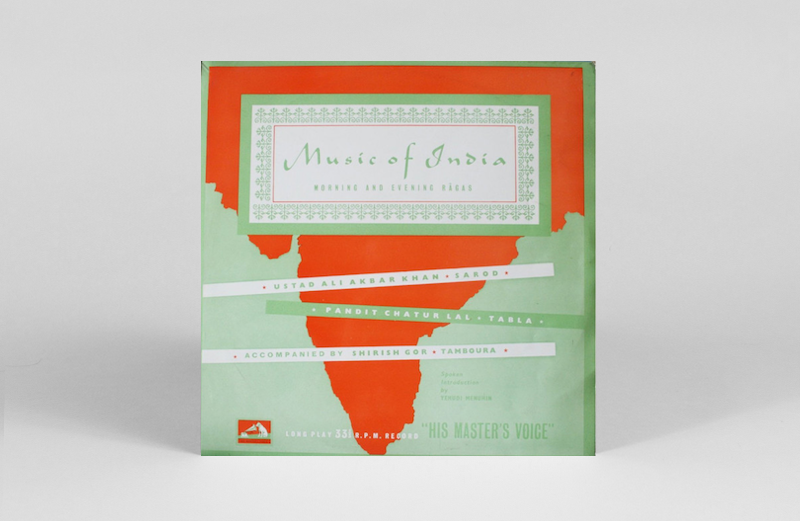
Ali Akbar Khan
Music Of India: Morning And Evening Ragas
(Angel LP, 1956)
Sarod player Ali Akbar Khan was the first Hindustani musician to make an impact in Europe and the US, a year ahead of his contemporary and brother-in-law, the sitar player Ravi Shankar. In 1955, sponsored by violinist Yehudi Menuhin, Khan made his overseas debut at the Museum of Modern Art in New York, where he also recorded Music Of India: Morning And Evening Ragas, the first LP of classical Indian music to be recorded outside the sub-continent. Accompanied by tabla player Chatur Lal, Khan takes the 25-string sarod – a heftier, bassier cousin of the sitar – through two mind-bending improvisations.
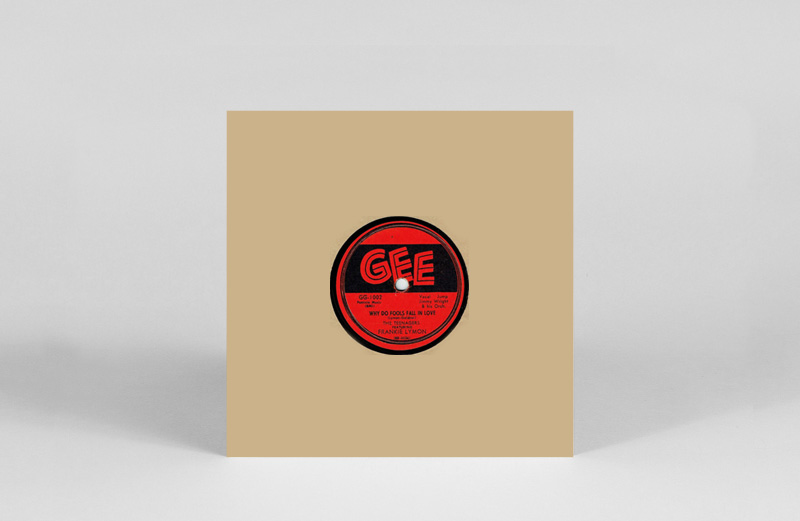
The Teenagers
Why Do Fools Fall In Love / Please Be Mine
(Gee 78rpm & 45rpm singles, 1956)
Among the first R&B-to-pop crossover hits of the rock ‘n’ roll era, doo-wop ballad ‘Why Do Fools Fall In Love’ featured the captivating lead vocals of boy soprano Frankie Lymon, then only 14 years old. Reissues were credited to Frankie Lymon & The Teenagers. The instrumental arrangement was by tenor saxophonist Jimmy Wright, who led the studio backing-band. Lymon left the Teenagers to go solo in 1957 but never repeated the success of ‘Why Do Fools Fall In Love.’ He died of a heroin overdose in 1968.
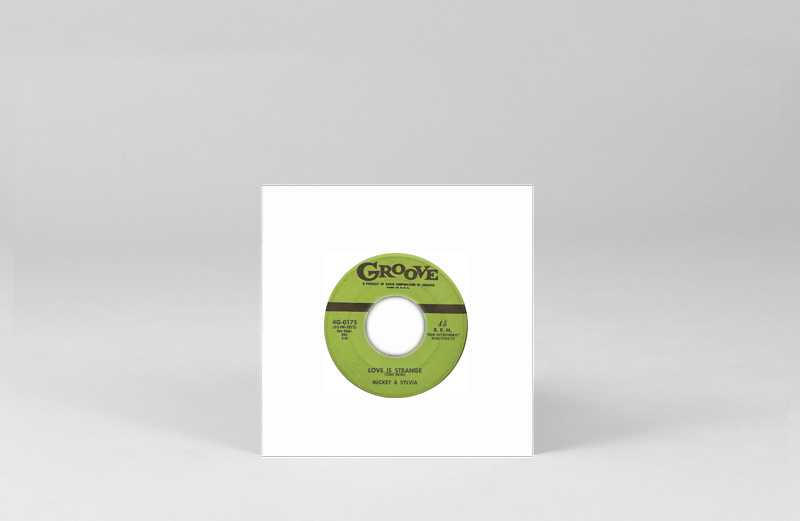
Mickey & Sylvia
Love Is Strange / I’m Going Home
(Groove 78rpm & 45rpm singles, 1956)
Another timeless song, another big crossover hit, ‘Love Is Strange’ was written by Bo Diddley and was recorded by him in late 1955 but not released until 2007 (on CD only). The song was substantially reconfigured by Mickey & Sylvia, whose version spawned several great covers, including one by the Everly Brothers. But Mickey & Sylvia’s original was the most soulful, injecting a little humour into the heartache along the way. The duo effectively disbanded in 1959. Guitarist Mickey Baker went back to session work. Sylvia Robinson returned to the bigtime in 1979, when she founded Sugarhill Records, co-writing the Sugarhill Gang’s ‘Rapper’s Delight’ and Grandmaster Flash’s ‘The Message’ among other early rap successes.
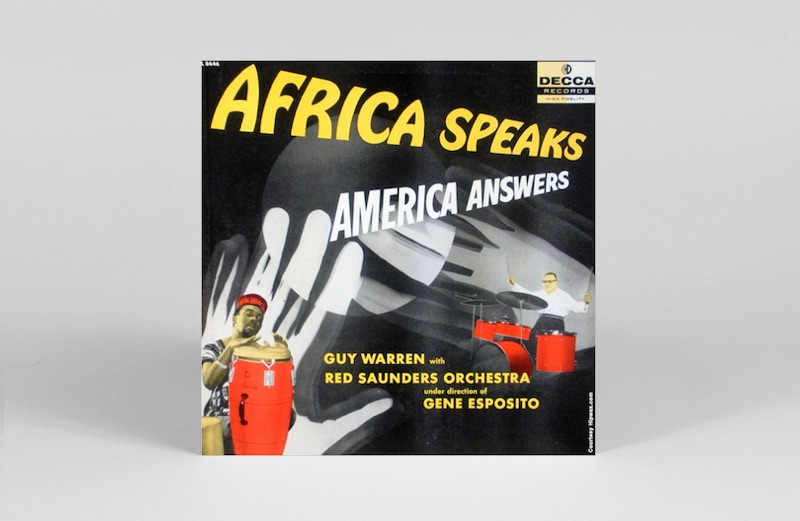
Guy Warren
Africa Speaks America Answers
(Decca LP, 1956)
In 1946, with multi-instrumentalist E.T. Mensah, drummer and percussionist Guy Warren co-founded the Tempos, for over 20 years Ghana’s most influential highlife band. In 1955, Warren left Ghana for Chicago, where, with a group assembled by drummer and vibraphonist Red Saunders, he recorded Africa Speaks America Answers, his first album under his own name. Warren played, as he described it, “African music with a little bit of jazz thrown in, not jazz with a little African.” The albeit-underground success of the disc, and its follow-up Themes For African Drums, paved the way for fellow West African percussionists Babatunde Olatunji and Solomon Ilori to record for Columbia in the late 1950s and Blue Note in the early 1960s, respectively.
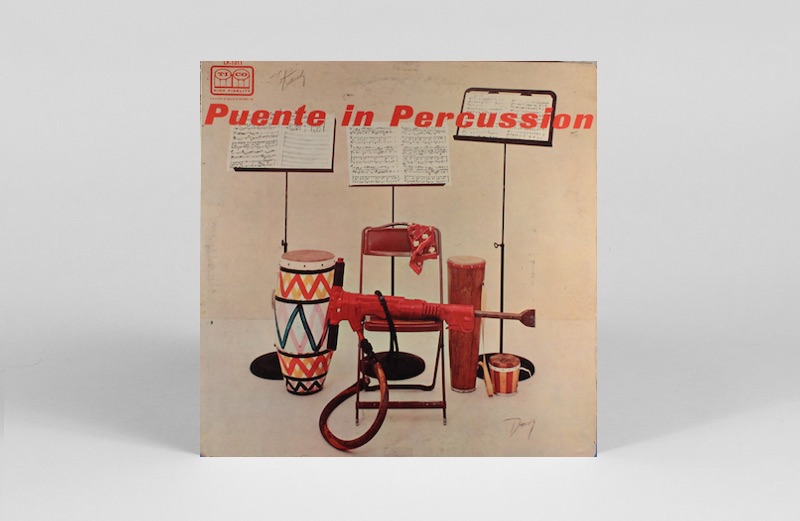
Tito Puente
Puente In Percussion
(Tico LP, 1956)
Later in his career, New York-born bandleader and timbale wizard Tito Puente recorded cheesy albums of amorphous Latin dance music aimed at middle-American audiences, in which the percussion quotient was dialled down to polite levels. But this early, roots LP makes no concessions. The music is stripped to its rhythmic core – no vocalist, keyboard or brass section, just an A-list quintet in which Puente is accompanied by acoustic bassist Bobby Rodriguez and conga and bongo players Willie Bobo, Patato Valdes and Mongo Santamaria. Most of the eight tracks explore Cuban-derived mambo and cha-cha-cha rhythms. If you love percussion-breaks, here are 34 minutes of pure heaven.
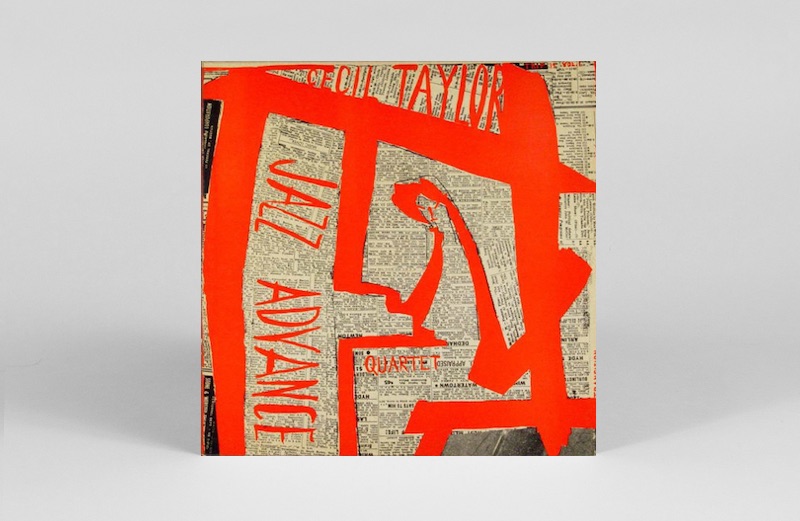
Cecil Taylor
Jazz Advance
(Transition LP, 1956)
Cecil Taylor’s debut album, which was savaged by mainstream critics on release, was among the first free-jazz releases and still stands as a masterpiece of the genre. The seven-track disc comprises three Taylor originals and four radically reimagined standards by Thelonious Monk, Cole Porter, Duke Ellington and Gus Arnheim. Transition was a shortlived label set up by producer Tom Wilson who, as one of the few African American rock producers of the 1960s, worked on breakthrough albums by Bob Dylan, the Velvet Underground, the Mothers of Invention and Soft Machine. Taylor was in front, but Ornette Coleman would emerge a year later and Sun Ra was limbering up.
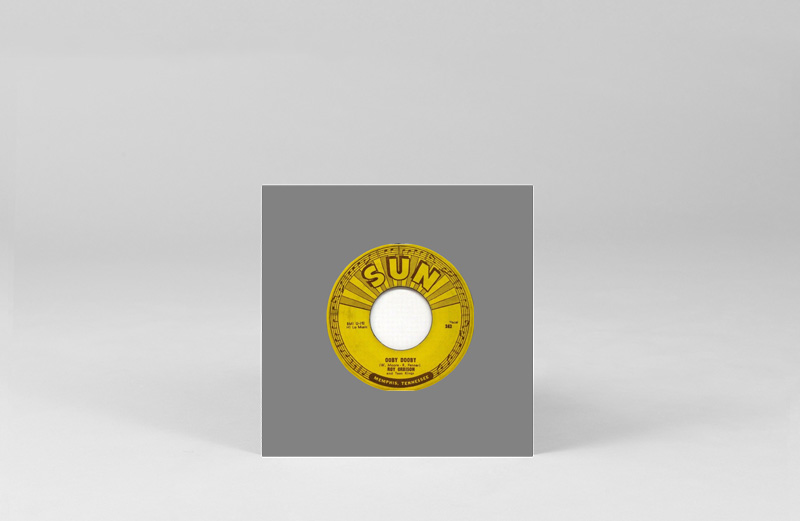
Roy Orbison
Ooby Dooby / Go Go Go
(Sun 78rpm & 45rpm singles, 1956)
In 1956, Roy Orbison’s vocal style was still heavily in debt to Elvis Presley – Orbison’s signature high-tenor and persona of vulnerability were not cemented until 1960 and ‘Only The Lonely,’ his first Top 10 hit. ‘Ooby Dooby’ is solid but generic rockabilly. The later much-covered ‘Go Go Go’ (aka ‘Down The Line’), the first original Orbison recorded, perhaps has more individual character. Bags of energy, solid guitar work, but few signs yet of the greatness that was to come. A collectable artefact nonetheless.
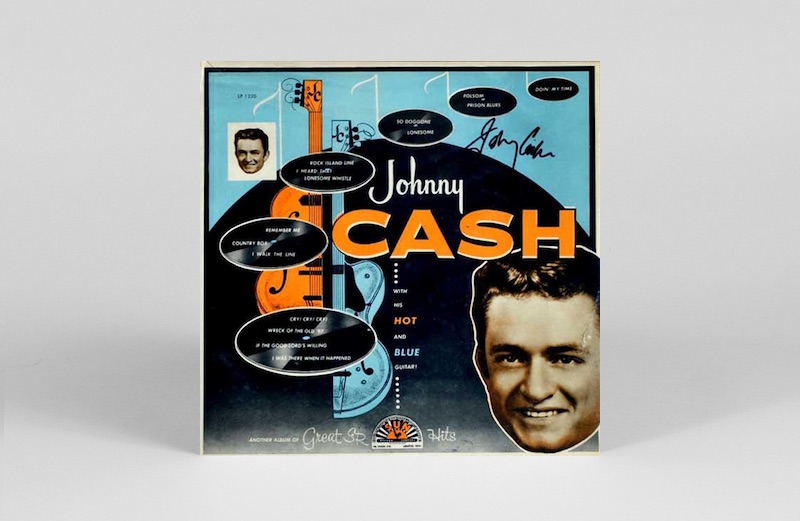
Johnny Cash
Johnny Cash With His Hot And Blue Guitar
(Sun LP, 1957)
Johnny Cash’s debut LP was also the first album to be released by a Sun artist. It includes the original versions of ‘Cry! Cry! Cry!’, ‘Folsom Prison Blues’ and ‘I Walk The Line,’ all hits on the country singles charts in 1955 and 1956. The music is on the porous border between rockabilly and traditional country & western, and includes the early Cash original ‘Country Boy.’ With His Hot And Blue Guitar was rereleased on vinyl by Varèse Sarabande in 2002 with five previously unreleased tracks including alternate takes of ‘Folsom Prison Blues’ and ‘I Walk The Line.’ Cash recorded many outstanding albums over the next half-century, but none more enjoyable than this one.
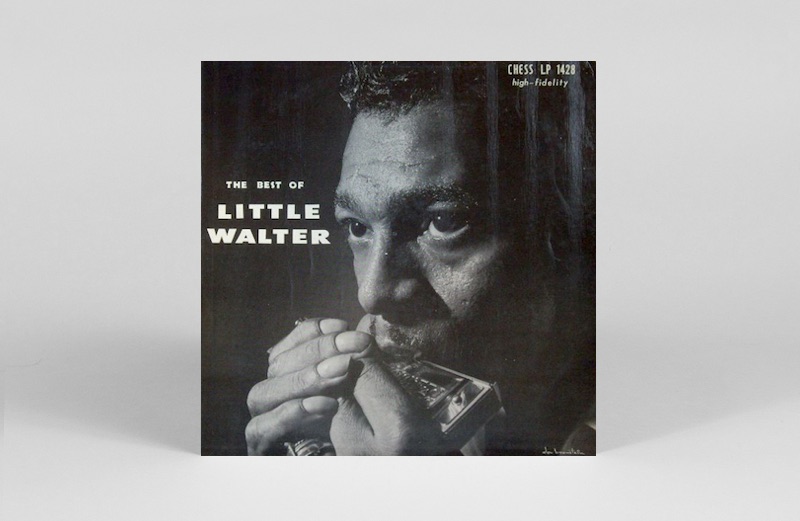
Little Walter
The Best Of Little Walter
(Chess LP, 1957)
Chicago bluesman Little Walter did for the harmonica what Jimi Hendrix later did for the electric guitar. A member of Muddy Waters’ touring band from 1948 through 1952, Walter grew frustrated at being overshadowed on stage by the high-volume presence of Waters and the group’s lead guitarist, Jimmy Rogers. In response, Walter developed the technique of cupping a microphone next to his harmonica and plugging the lead into his own amplifier, turning it up to 11 and purposefully creating distortion and other high-decibel sonic effects. It is no coincidence that he employed the young Albert Ayler in his own touring band in 1953. The Best Of Little Walter includes 10 of his best-selling singles.
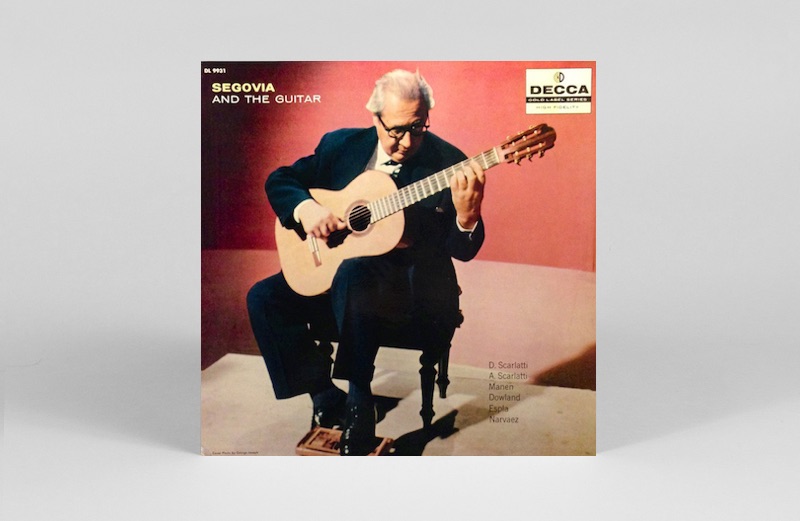
Andrés Segovia
Segovia And The Guitar
(Decca LP, 1957)
The 1950s was the decade in which the guitar, fuelled by rock ‘n’ roll, took on the central role in popular music it has commanded ever since. The new found enthusiasm for the instrument extended to other genres, too, including classical music, where the Spanish virtuoso Andrés Segovia established its credentials as a “serious” instrument. On the beguiling Segovia And The Guitar, he played a broad spectrum of fretboard music from the Elizabethan lutenist John Dowland through the Baroque composer Alessandro Scarlatti on to Óscar Esplá, Segovia’s near contemporary. A master technician, Segovia was also a supremely soulful player, and this, like all his albums of the period, is a delight.
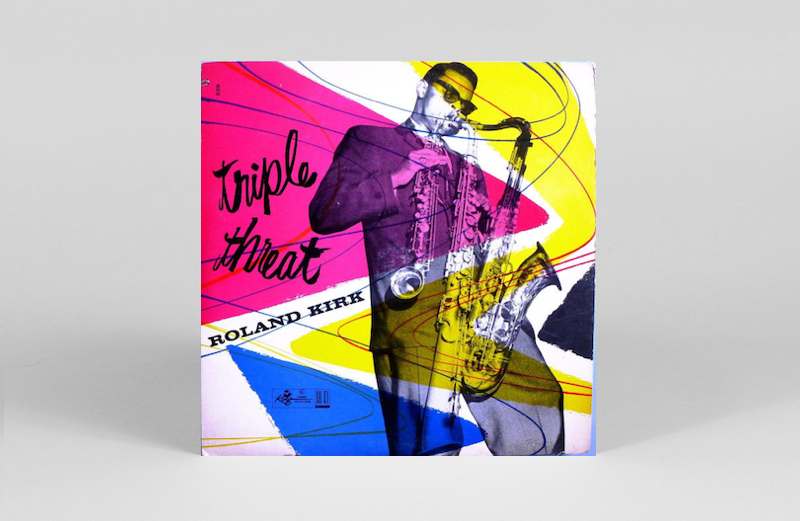
Roland Kirk
Triple Threat
(King LP, 1957)
Triple Threat was Roland Kirk’s first album under his own name, and he began as he meant to go on. The disc featured Kirk on two obscure, signature instruments, the manzello and the stritch, as well as the tenor saxophone, and also introduced his revolutionary technique of playing two or three horns at once. King released the LP in a limited run and to little comment and it continued to be overlooked once Kirk made his breakthrough in the 1960s. It was reissued as Third Dimension on Bethlehem in 1976 and as Early Roots on Affinity in 1984. A copy of the original King pressing was recently put on sale in the US with an asking price of $20,000.
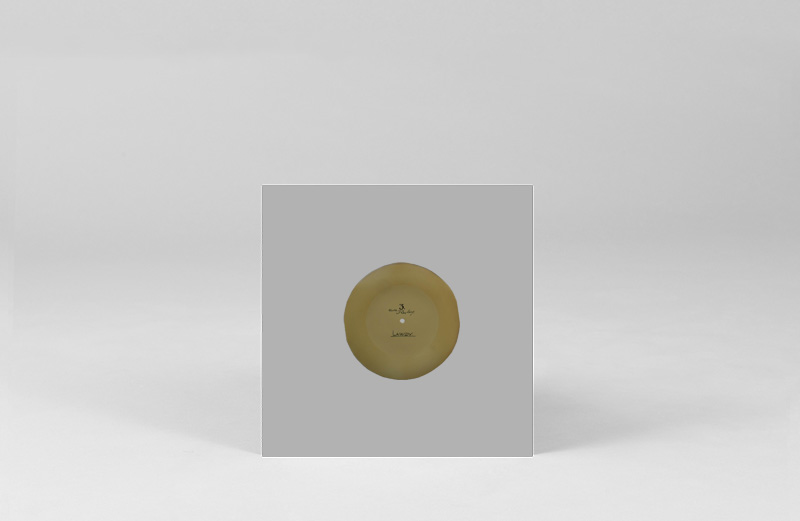
Elvis Presley
Lawdy Miss Clawdy
(X-ray film 8” 78rpm single circa, 1957)
In the USSR in the 1950s, unless you lived in the west of the country and could pick up radio transmissions from Europe, it was practically impossible to hear jazz or rock ‘n’ roll, both of which were considered “decadent” by the Soviet authorities. Enthusiasts found a solution by making single-sided discs on x-ray film. Audio quality was poor, but better than nothing. In the circumstances, even Elvis Presley’s ferociously acquisitive manager, Colonel Tom Parker, might have hesitated to call this bootlegging. The practice was banned by the Soviet authorities in 1958, but continued.
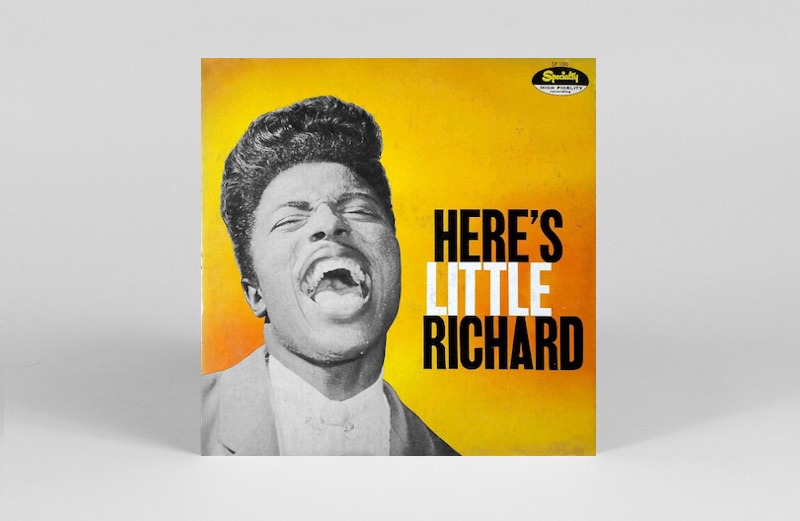
Little Richard
Here’s Little Richard
(Speciality LP, 1957)
Arguably the most important of all the African American progenitors of rock ‘n’ roll, ahead even of Chuck Berry, Little Richard, starting in 1951, recorded a string of wild, sexually charged, mutant-R&B singles for RCA, Peacock and Speciality. The 12-track compilation Here’s Little Richard, Richard’s first album, collects most of his Speciality hits including ‘Tutti Frutti,’ ‘Ready Teddy,’ ‘Slippin’ And Slidin’,’ ‘Long Tall Sally’ and ‘Rip It Up’ (‘Lucille,’ ‘Keep A-Knocking’ and ‘Good Golly Miss Molly’ were released between 1957 and 1959). While Berry put the instrumental focus on his guitar, Richard bounced his piano off an eviscerating saxophone section featuring tenor soloists Lee Allen and Grady Gaines.
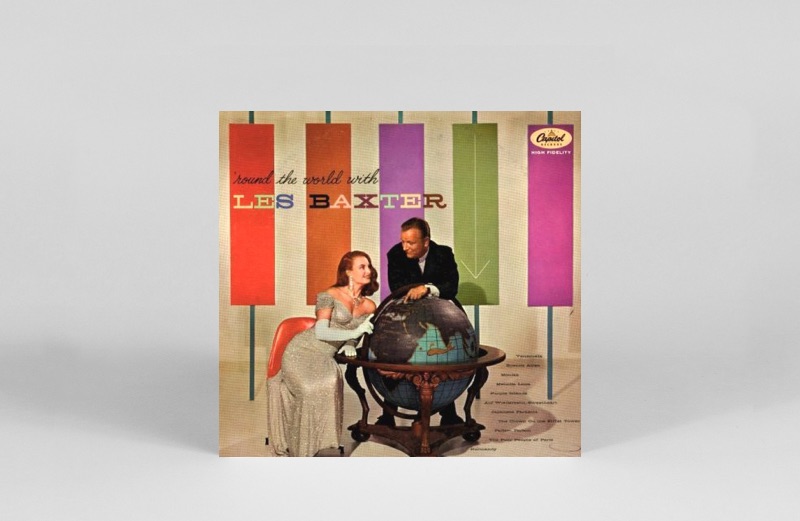
Les Baxter
‘Round The World With Les Baxter
(Capitol LP, 1957)
Fifty years on, it is easy to mock the exotica of bandleaders such as Les Baxter and Martin Denny. But Baxter and Denny’s work marked the first time suburban America looked beyond its horizons towards more distant, non-caucasian cultures – a paradigm shift encouraged by the boom in the country’s post-war economy and the arrival of affordable international air-travel. It can even be argued that exotica sowed the seeds of the “world music” movement of the 1970s and 1980s. Meanwhile, sit down with a Pina Colada, Mai Tai or exotic cheroot, as the fancy takes you, and kick back.
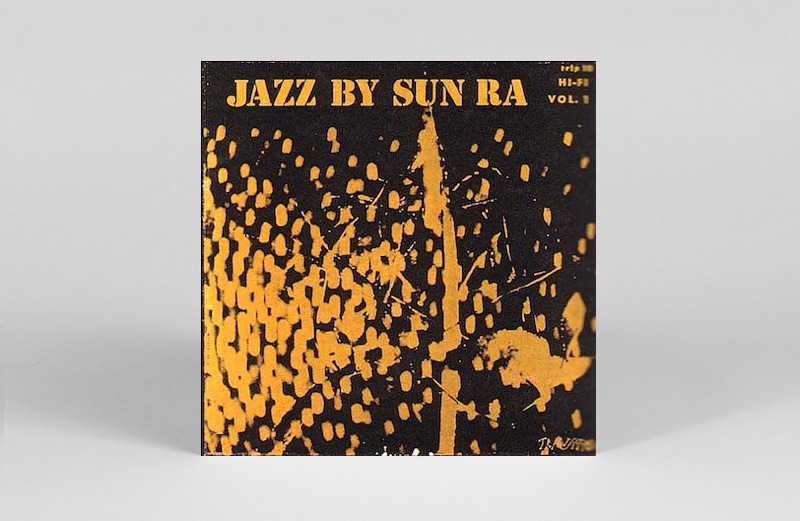
Sun Ra and His Arkestra
Jazz By Sun Ra
(Transition LP, 1957)
While Les Baxter and Martin Denny were in the mid-1950s exploring earthbound exoticism, Sun Ra had already embarked on an off-planet trajectory. Jazz By Sun Ra (later rereleased as Sun Song) – like Cecil Taylor’s Jazz Advance, a Tom Wilson production – introduces the complex time-signatures and scales based on mathematical formulas that would become signatures of Ra’s better-known later work. The 11-piece lineup includes Arkestra saxophone-stalwarts John Gilmore and Pat Patrick. Either through synchronicity or pure coincidence, the only non-original on Jazz By Sun Ra is Harry Revel’s ‘Possession,’ which was written for Les Baxter and first appeared on Baxter’s album Perfume Set To Music.
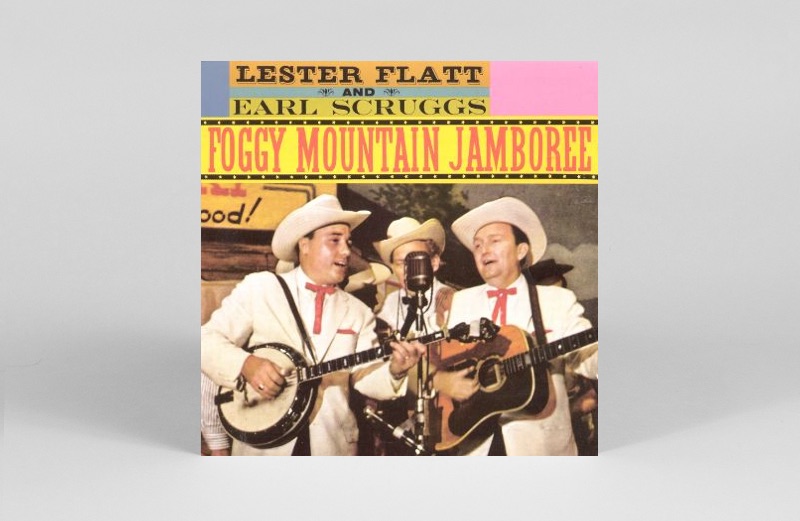
Lester Flatt and Earl Scruggs
Foggy Mountain Jamboree
(Columbia LP, 1957)
The all-time, definitive bluegrass album, with a title evoking guitarist Lester Flatt and banjoist Earl Scruggs’ breakthrough 1949 hit, ‘Foggy Mountain Breakdown,’ a showcase for Scruggs’ gobsmacking, rocket-fuelled picking style. Recorded between 1951 and 1955, the LP includes heaps more banjo pyrotechnics alongside the duo’s inimitable close-harmony vocals. Ace musicians in the Foggy Mountain Boys’ rolling lineup include Chet Atkins on guitar, Curly Seckler on mandolin and Chubby Wise on fiddle. If you only buy one bluegrass album in your life, this is the one to get. Powerful magic.
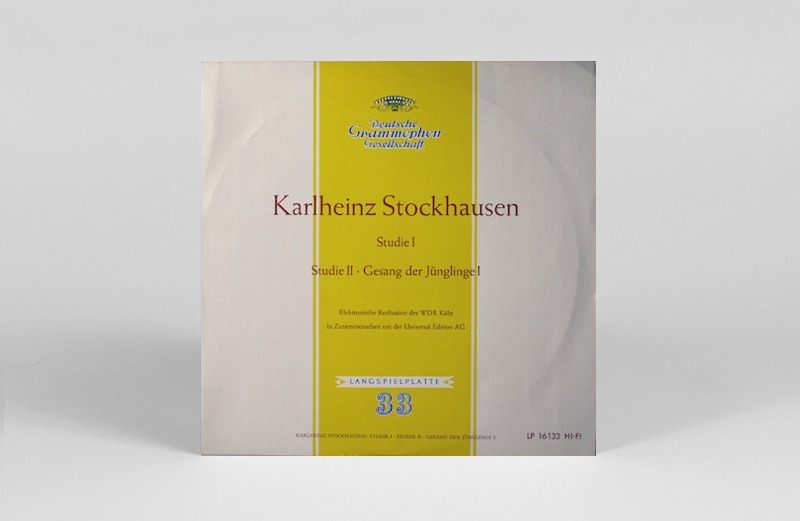
Karlheinz Stockhausen
Studie 1 / Studie 2 / Gesang Der Jünglinge
(Deutsche Grammaphon 10” LP, 1957)
Working in parallel to, but in isolation from, American electronic innovators in the 1950s, German theorist and composer Karlheinz Stockhausen influenced a generation of conservatoire-trained musicians and composers, along with the jazz and rock avant gardes of the 1960s and 1970s. ‘Gesang Der Jünglinge,’ recorded using the equipment in radio station WDR in Cologne in 1954 and 1955, is Stockhausen’s first masterpiece and a landmark of electronic music. The piece integrates electronically-produced sounds with the human voice and is also a blueprint for the experiments in spatial sound-design which Stockhausen introduced in live performances in the 1960s.
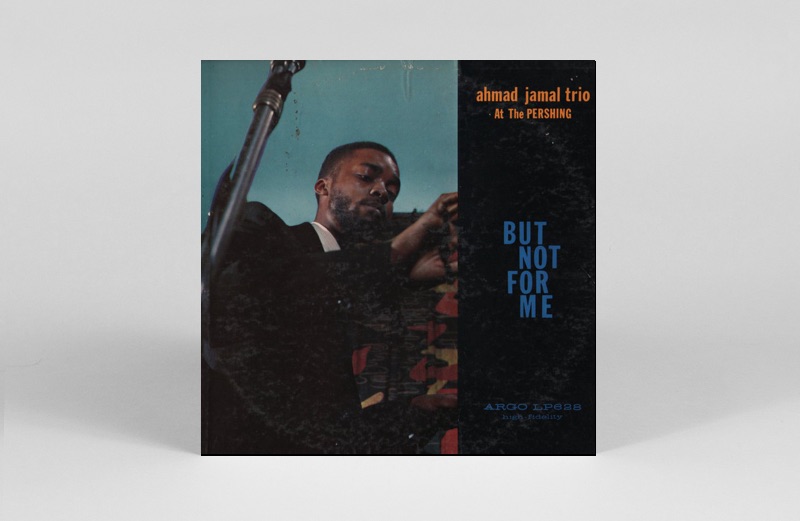
Ahmad Jamal
At The Pershing: But Not For Me
(Argo LP, 1958)
Post-bop US jazz-pianism was not all about gospel-drenched funk, as played by Horace Silver and his disciples. Like Al Haig, Ahmad Jamal was a leading light of an alternative school. But while Haig pursued harmonic exploration, Jamal favoured simpler, stripped-down melodicism. He was assiduously championed by Miles Davis at a time when most critics were writing the Chicago-based musician off as a lightweight. At The Pershing: But Not For Me, recorded live at the city’s Pershing Hotel and released on Chicago blues-label Chess’ jazz subsidiary, Argo, was Jamal’s breakout disc.
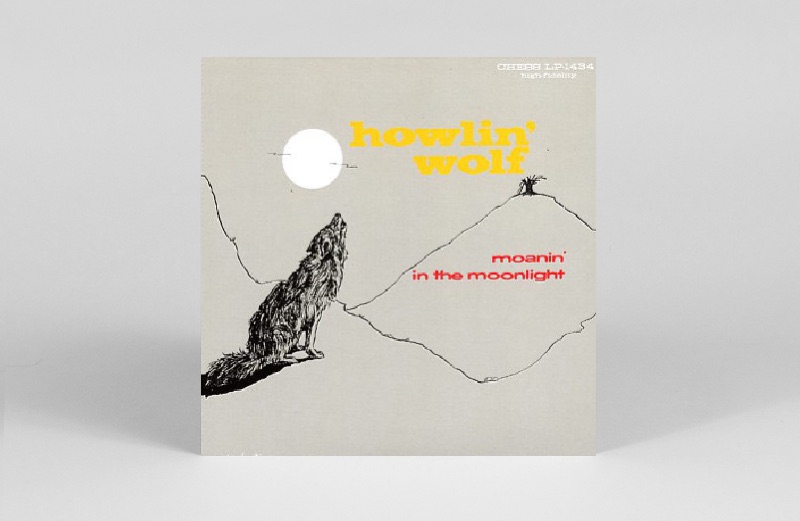
Howlin’ Wolf
Moanin’ In The Moonlight
(Chess LP, 1958)
Muddy Waters may have been the most influential electric-bluesman to emerge from Chicago in the 1950s, but vocalist and harmonica player Howlin’ Wolf ran him close. Both musicians learnt their art in rural Mississippi. A less urbanised stylist than Waters, Wolf tapped into raw Delta-voodoo roots and his best performances possessed shamanistic intensity. Moanin’ In The Moonlight collects his best singles of the decade including ‘Evil,’ ‘I Asked For Water (She Gave Me Gasoline),’ ‘Smokestack Lightnin’’ and ‘Moanin’ At Midnight.’
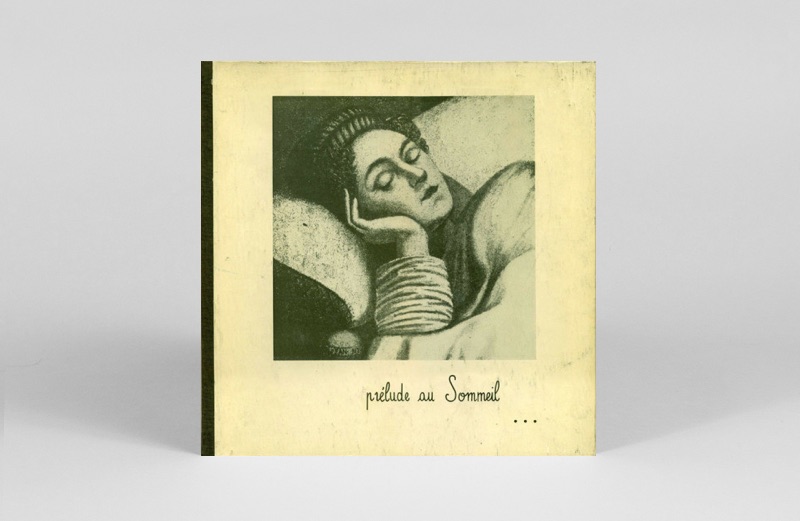
Jean-Jacques Perrey
Prelude Au Sommeil
(Procédé Dormiphone LP, 1958)
The French composer Jean-Jacques Perrey was an early master of the Ondioline, a proto-synthesizer from the 1940s. The instrument has a monophonic vacuum-tube keyboard, the keys themselves mounted on springs, so that they can be manipulated to create a vibrato effect whilst playing. Perrey’s first LP, Prelude au Sommeil, was self-released and followed tours with the singer Charles Trenet (co-composer of the evergreen ‘La Mer’ in 1943). Its suite of slow-paced lullabies was intended for mental hospitals to use as a sort of audio sedative. Huge organ chords float by like clouds – the sonic opposite of the also slow paced, but disturbing, organ music later written by György Ligeti.
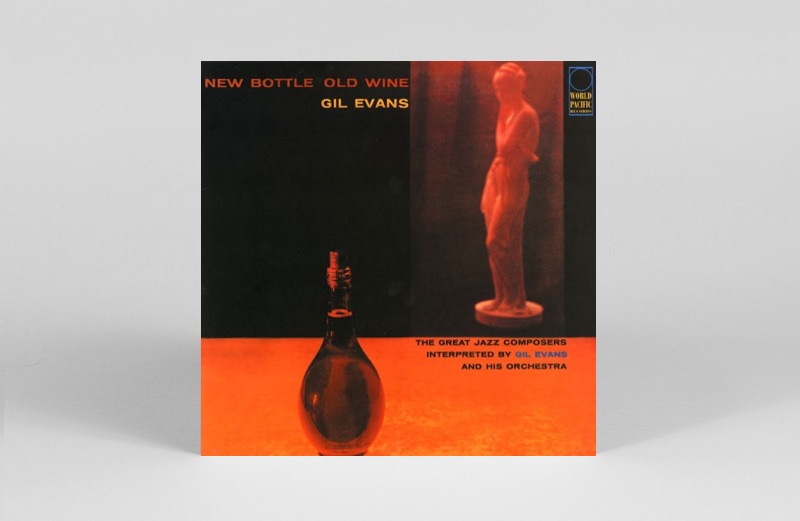
Gil Evans
New Bottle Old Wine
(Pacific Jazz LP, 1958)
Arranger Gil Evans reshaped jazz twice during his lifetime, first as a member of the Miles Davis-fronted collective which made the late-1940s singles which were subsequently collected on the album Birth Of The Cool and later, again in collaboration with Davis, on the late-1950s/early 1960s big-band albums Miles Ahead, Porgy And Bess and Sketches Of Spain. New Bottle Old Wine, the first of two large-ensemble LPs Evans recorded under his own name for Pacific Jazz, catches him on the cusp of his second impact with Davis. Rising star and Davis sideman Cannonball Adderley deps for the trumpeter as the only featured soloist on eight reimagined jazz-standards, ranging from ‘King Porter Stomp’ through ‘Manteca.’
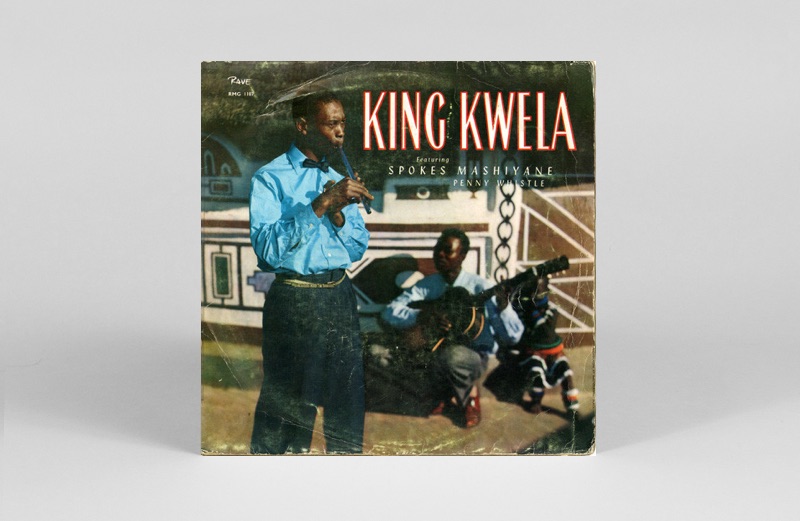
Spokes Mashiyane
King Kwela
(Rave LP, 1958)
Kwela (aka pennywhistle jive) was the link between the South African township-music marabi in the 1940s and the mbaqanga and sax jive styles which emerged in the 1960s. In the street, kwela was typically played on three or four pennywhistles, with the lead musician playing the melody and improvising around it while his colleagues riffed in the background. In the recording studio, a stand-up bass was sometimes added. Spokes Mashiyane was the most popular performer, rivalled only by Lemmy Mabaso. King Kwela is a collection of previously issued singles and is authentic kwela at its best. Simultaneously urgent and lilting, the music’s appeal is undimmed.
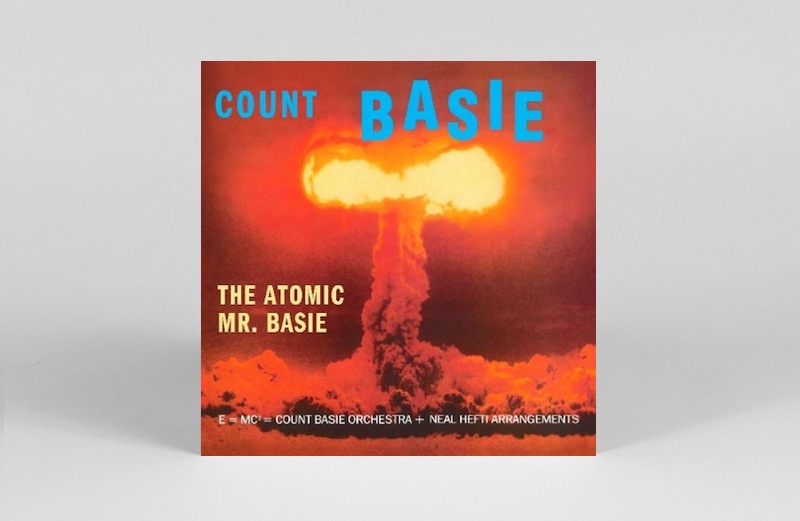
Count Basie
E=MC2 = Count Basie Orchestra + Neil Hefti Arrangements
(Roulette LP, 1958)
Just when most contemporary observers were writing off big-band jazz as an anachronism, in need of radical retooling by the likes of Gil Evans, the venerable Count Basie recorded this stomping celebration of the classic sound. Popularly known as ‘The Atomic Mr Basie,’ the disc is on a level comparable to Basie’s breakthrough recordings on Decca in the 1930s, but this time rendered in vivid hi-fi. The material, all of it composed and arranged by Neil Hefti, provided Basie with a fresh set of standards for the rest of his career, including ‘The Kid From Red Bank’ and ‘Flight Of The Foo Birds.’ Anachronistic? Maybe. Still kicking? Definitely.
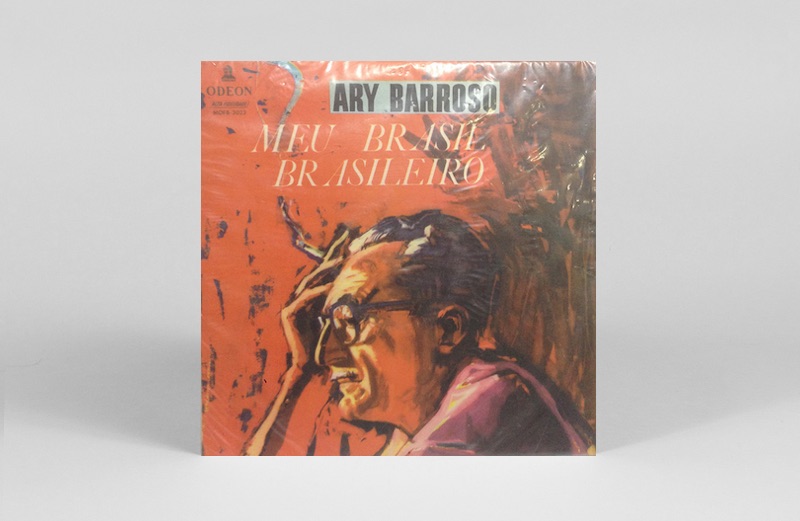
Ary Barroso
Meu Brasil Brasilieiro
(Odeon LP, 1958)
The composer of ‘Aquarela do Brasil,’ still in the Brazilian repertoire 77 years after he wrote it, Ary Barroso was a transitional figure between bossa nova and the other samba-based styles which preceded it. He was revered by the new generation of bossa nova singers and his songs were staples of the genre. On Meu Brasil Brasilieiro, Barroso, playing piano, fronts an orchestra and chorus arranged by Leo Peracchi, on a dozen originals including ‘Aquarela.’
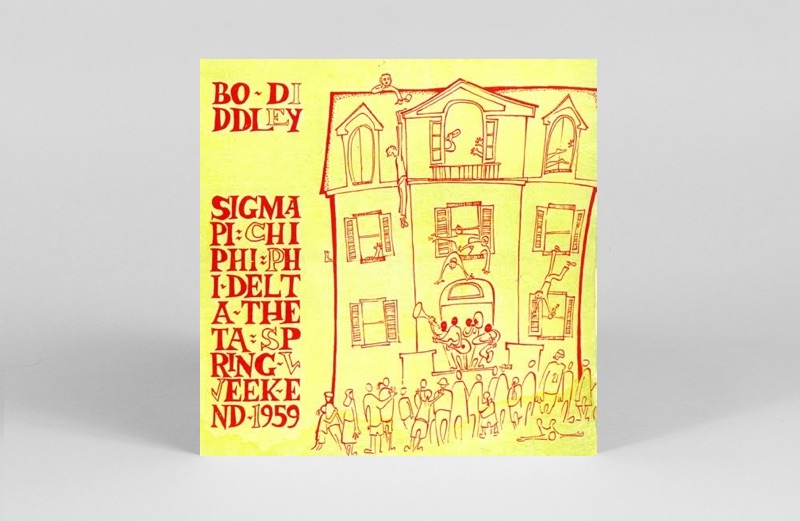
Bo Diddley
Sigma Pi Chi Phi Phi Delta Theta Spring Weekend 1959
(Privately-released LP, 1959)
Bo Diddley was one of the two pre-eminent African American rock ‘n’ roll guitar-stylists of the 1950s, the other being Chuck Berry. Both men’s work is available on compilation albums released by Chess toward the end of decade – including One Dozen Berrys, Berry On Top, Bo Diddley and Go Bo Diddley – but their work outside the studio during this time was barely documented, making Sigma Pi Chi Phi Phi Delta Theta Spring Weekend 1959 particularly valuable. The album was recorded at a frat party at Cornell University, an Ivy League institution whose students could afford to finance mementos such as this. The sound quality is good, the band is cooking and Diddley romps through seven songs, opening with a seven-minute version of ‘Hey Bo Diddley.’
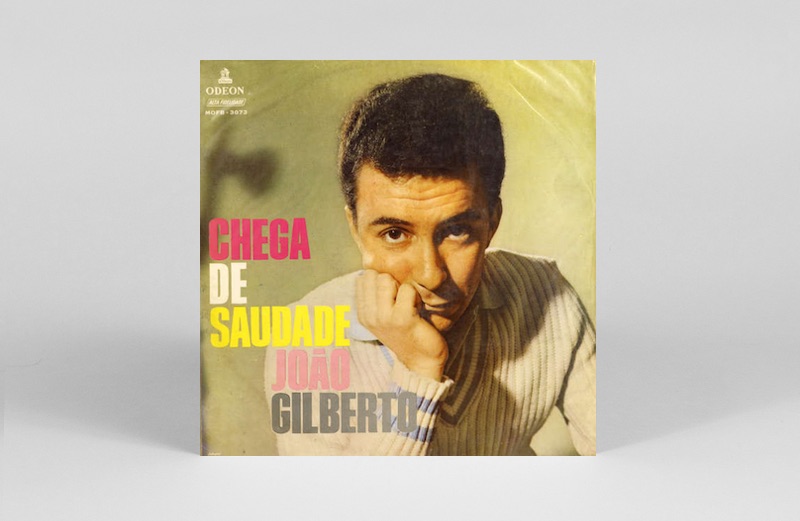
João Gilberto
Chega De Saudade
(Odeon LP, 1959)
The first fully-fledged bossa nova LP, the divine Chega De Saudade includes João Gilberto’s eponymous breakthrough single from the previous year along with a second Antonio Carlos Jobim classic, ‘Desafinado,’ a US Top 20 singles hit for Stan Getz in 1962. Also included are songs by Ary Barroso and two other first-rank songwriters, Carlos Lyra and Dorival Caymmi. Gilberto excelled as a guitarist and singer rather than as a composer and Chega De Saudade includes his irritating novelty song ‘Bim Bom,’ but as that track has a playing time of just over a minute, you can live with it.
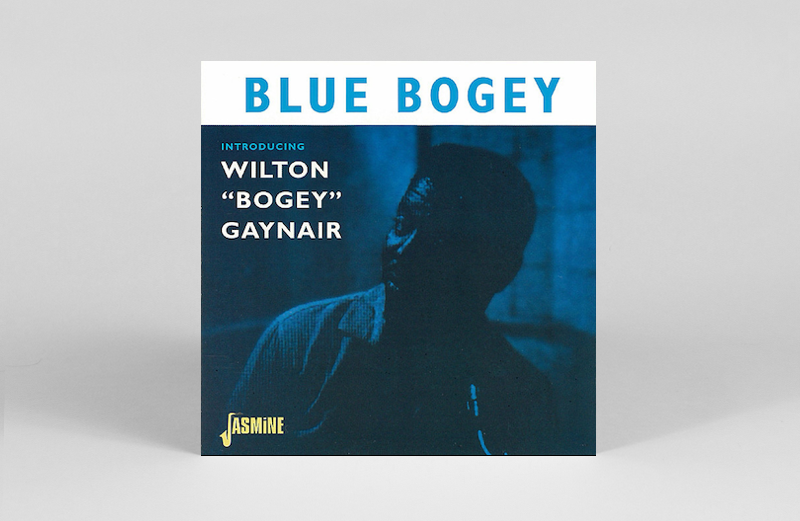
Wilton Bogey Gaynair
Blue Bogey
(Tempo LP, 1959)
Had Wilton Gaynair been based in the US and had got the breaks, he might well be remembered today as one of the Blue Note label’s top hard-bop tenor saxophonists. But Gaynair was born in Jamaica and moved to Germany in 1955, at a time when the best jazz was widely considered to come exclusively from the US. Gaynair made only three albums as leader before his death in 1995. Blue Bogey was the first. The second, Africa Calling, was recorded in 1960, but the demise of Tempo that year led to it staying unreleased for decades. Both albums were recorded in London with British rhythm sections and reveal a saxophonist who had clearly been listening to Benny Golson and Lucky Thompson, but who had infused those influences with a twist of the Caribbean. As good as anything Hank Mobley recorded and, for the moment anyway, available for a lot less money.
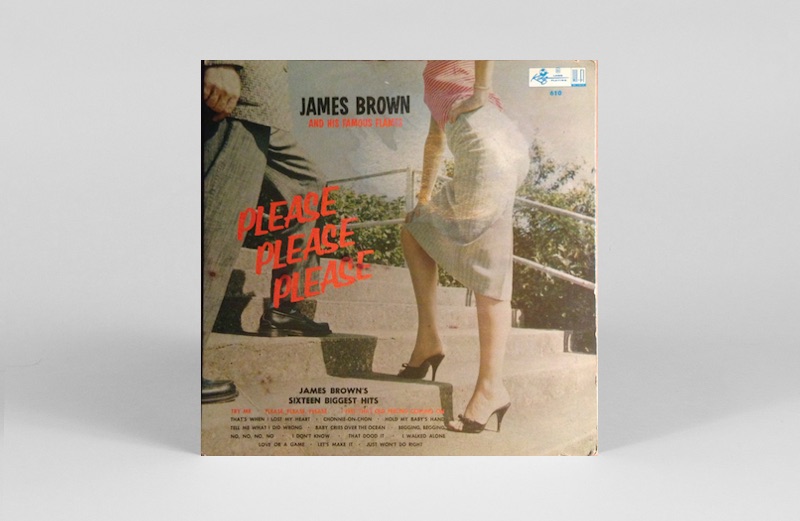
James Brown & His Famous Flames
Please Please Please
(King LP, 1959)
The 1956 single ‘Please Please Please,’ a slow-burning but ultimately massive R&B chart hit, contains what is still one of James Brown’s most powerful performances. By 1959, when this compilation was released, Brown had developed an equally affecting stage-routine to go with it – pleading, begging, falling to his knees in apparent exhaustion and having to be ushered towards the wings by a member of his entourage, only to break free and return to the mic for an extended reprise. Great song, great theatre. This album also includes Brown’s second big hit, ‘Try Me,’ along with other A and B-sides recorded between 1956 and 1958.
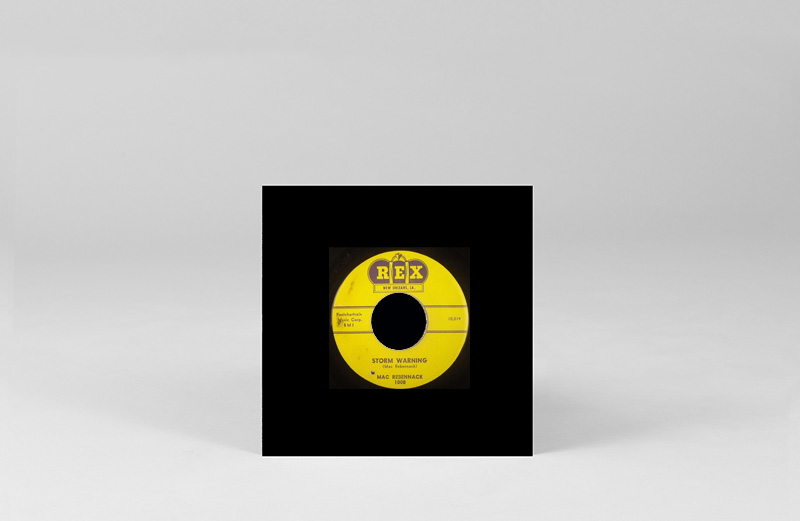
Mac Rebennack
Storm Warning / Foolish Little Girl
(Rex 45rpm single, 1959)
In 1959, Mac Rebennack’s Dr. John, The Night Tripper persona was still almost ten years away and the clean shaven, 19-year-old guitarist and pianist was working as a session man. These two originals show little of the psychedelia and voodoun with which Dr. John spiced his New Orleans funk but are terrific rock ‘n’ roll. A raw and urgent instrumental, ‘Storm Warning’ uses Bo Diddley’s “postman’s knock” beat behind Rebennack’s gritty guitar and Alvin Tyler’s booting tenor saxophone. Allen Toussaint is on back-up piano. Rebennack later had to give up guitar, having had one of his fingers injured by a gunshot in a dancehall, which is why Dr. John played keyboards.
John Fahey
Blind Joe Death
(Self-pressed LP, 1959)
Another musician who would undoubtedly have been aware of Folkways’ 1952 box set Anthology Of American Folk Music was the guitarist John Fahey, who in the late 1950s was developing a unique fingerpicking style of playing the blues and folk music. On his own label, Takoma, in the 1960s and beyond, Fahey himself became a formative influence on roots and folk-based guitarists in the US and Britain. Blind Joe Death was his debut album and only around 100 copies were pressed for its first release. If one of those proves too hard (or too expensive) to get hold of, the Takoma reissue is also collectable.
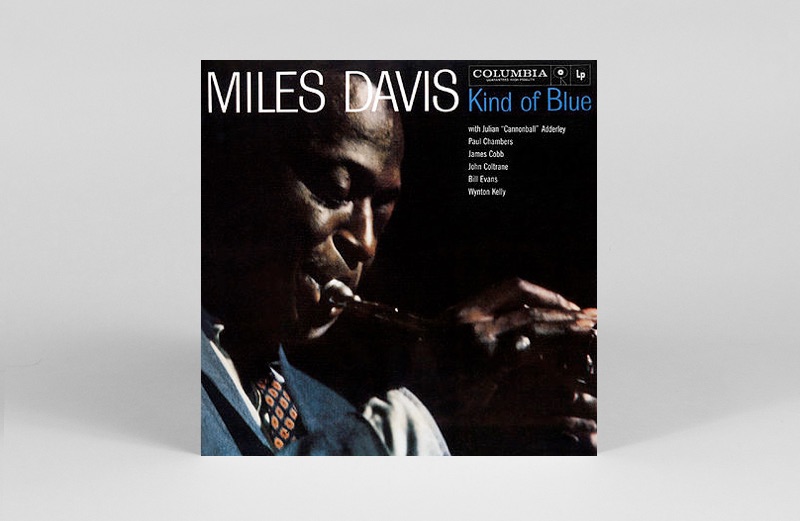
Miles Davis
Kind Of Blue
(Columbia LP, 1959)
A zillion dinner parties later, it is hard to imagine the revolutionary impact Miles Davis’ Kind Of Blue created in 1959. Its release was sandwiched between those of Porgy And Bess and Sketches Of Spain, both recorded with large ensembles under the direction of arranger Gil Evans. Kind Of Blue, by contrast, was made with a sextet in which Davis shared the frontline with Cannonball Adderley and John Coltrane, rising stars of post-hard-bop jazz. The album included several expositions of Davis’ modal (as opposed to chord based) style, a major influence on Coltrane’s own-name recordings for Impulse in the 1960s and on jazz in general until the present day. Reissued by Columbia a dozen times during 1959 alone, the original pressing is a precious slice of history.
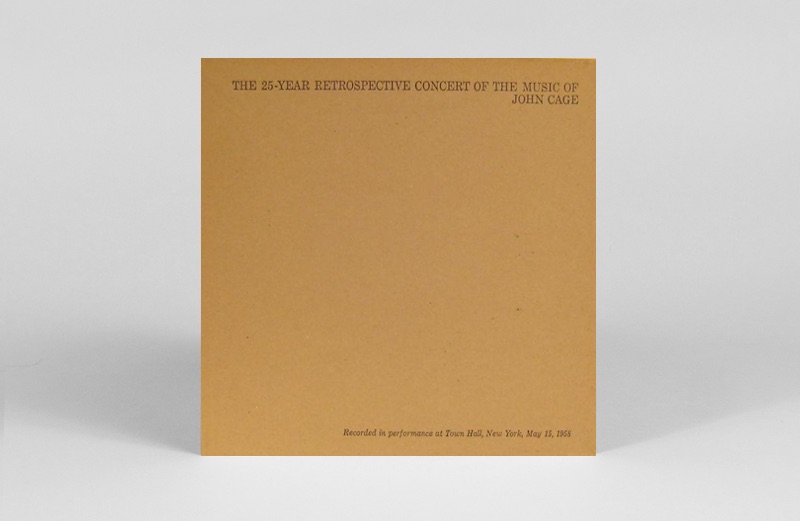
John Cage
The 25-Year Retrospective Concert of the Music of John Cage
(Privately released 3xLPs, 1959)
This box set is a recording of a tribute concert at New York Town Hall in 1958. The performance was produced by modernist painters Jasper Johns and Robert Rauschenberg, the audio recording by George Avakian (best known for his work on Columbia with Miles Davis). The programme includes all strands of Cage’s music. Performers include Cage, his first-call pianist, David Tudor, the Manhattan Percussion Ensemble and choreographer Merce Cunningham, who conducts ‘Concert for Piano and Orchestra,’ a chance-determined piece using a symbols-based notation system.
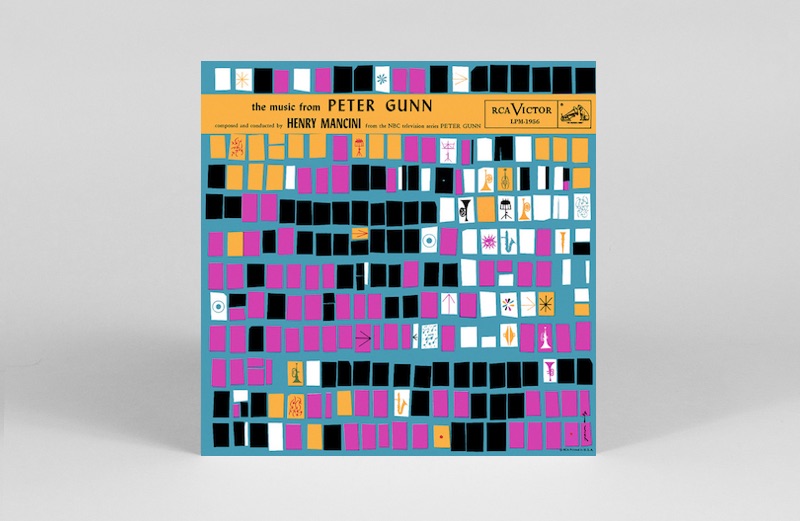
Henry Mancini
The Music From “Peter Gunn”
(RCA Victor LP, 1959)
The leading American film composer of the 1960s – among his several-dozen notable scores are those for Breakfast At Tiffany’s (including ‘Moon River’), The Pink Panther films and Experiment In Terror – Henry Mancini began his career working for TV. The Music From Peter Gunn collects the main-title theme and incidental music from the private-eye series Peter Gunn, which ran in the US from 1958 – 1961. A brilliantly atmospheric composer, Mancini’s gift for writing good tunes, and his jazz sensibility, make his scores work even when not accompanied by the visuals. To get the authentic 1950s experience, avoid stereo reissues of the original mono album.
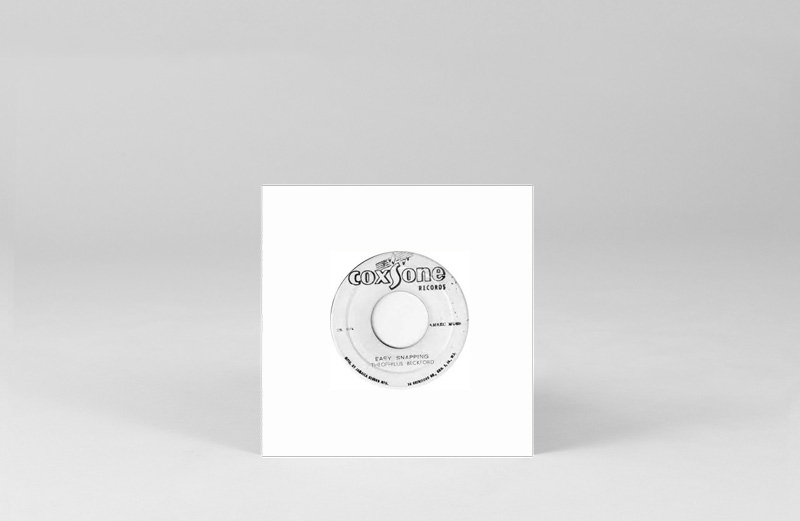
Theophilus Beckford
Easy Snapping / Proof Rum
(Worldisc 45rpm single, 1959)
Among the most enduring discs which effected the transition of Jamaican-produced rhythm and blues into ska in the early 1960s, pianist and singer Theophilus Beckford’s ‘Easy Snapping’ rides high. A medium-tempo boogie-shuffle, the track was produced by Clement Dodd for his own Worldisc label, which preceded the Studio One imprint. Slower paced and less rhythmically intense than ska, with an altogether more carefree vibe, ‘Easy Snapping’ was nonetheless a stepping stone towards what came later.
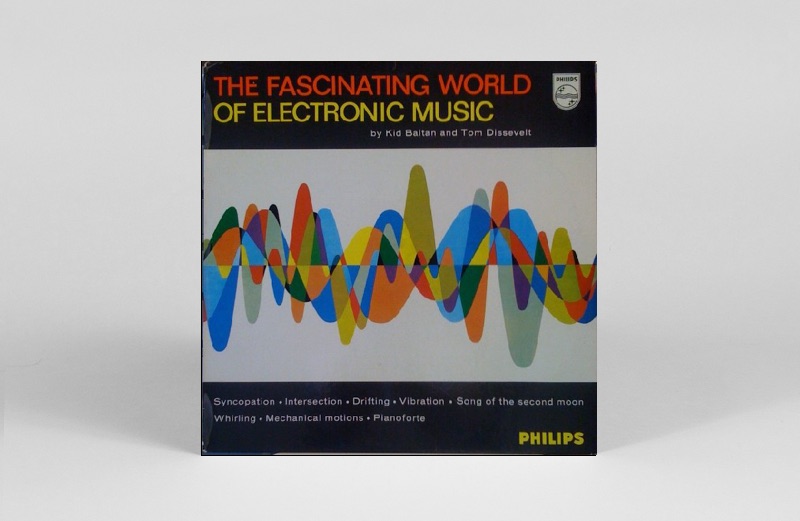
Kid Baltan & Tom Dissevelt
The Fascinating World of Electronic Music
(Philips LP, 1959)
Kid Baltan is the alias of Dutch artist Dick Raaijmakers, also a cultural theorist, composer and engineer. Raaijmakers met Tom Dissevelt while the pair were employed at Holland’s Royal Philips Electronics, a workshop that would later produce the first tape-cassettes and compact discs. At Philips, Raaijmakers and Dissevelt experimented with electronic pop music, built out of layered oscillator-tones and other unusual sound-sources. The Fascinating World of Electronic Music pulls together some of their late 1950s pieces. Highly rhythmic, the album has been described (tongue in cheek) as the first electronic-house release.
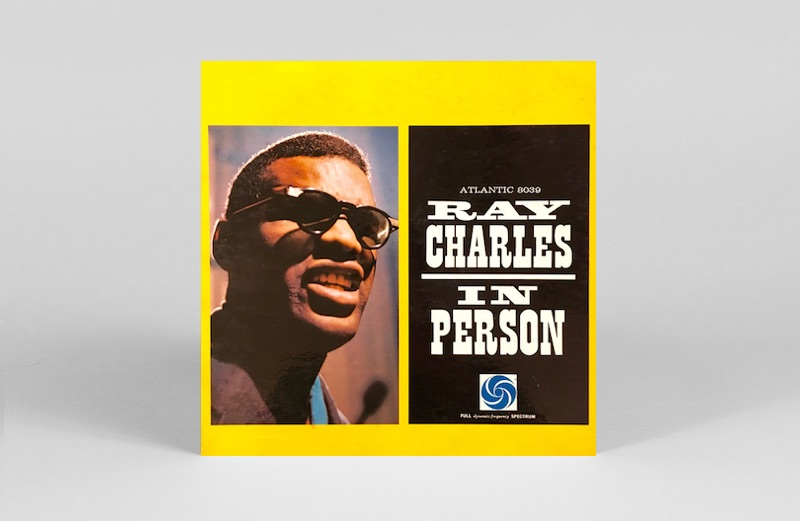
Ray Charles
In Person
(Atlantic LP, 1959/1960)
Recorded live in Atlanta, Georgia in summer 1959, but not released until the following year, In Person is the most viscerally exciting album Ray Charles ever recorded. The better known At Newport, recorded at the Newport Jazz Festival a year earlier, sounds almost tame alongside it. Sound quality is excellent, an achievement given that the recording was made without Charles or his band’s knowledge through a single microphone hung above the stage. Atlantic’s idea was to capture the ensemble in the raw, without the caution which can grip performers when they know they are being recorded for posterity. And, boy, did the strategy pay off. Charles, lead Raylette Marjorie Hendricks, tenor saxophonist David Fathead Newman and trumpeter Marcus Belgrave erupt over seven tracks which include definitive readings of ‘The Right Time,’ ‘What’d I Say’ and ‘Tell The Truth.’
Artwork: Hector Plimmer

